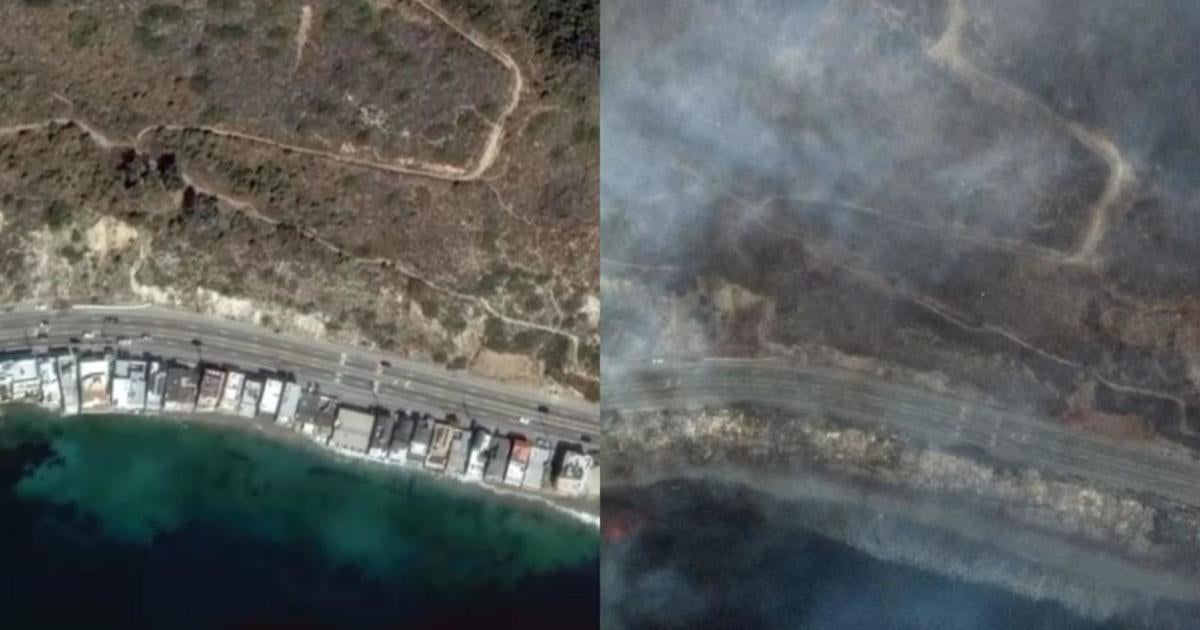Unmasking the Truth: California Wildfire Images and the Dangers of Misinformation
As California faces the relentless wrath of wildfires, the visual impact of these natural disasters is strikingly evident in before-and-after images that circulate across various media platforms. These images often evoke a deep emotional response, highlighting the devastation wrought upon communities, wildlife, and the environment. However, amid the genuine portrayals of destruction, a troubling surge of misinformation complicates the narrative, necessitating a vigilant approach from the public to sift through the noise and discern reality from deception.
The Reality of California Wildfires
California wildfires are not a novel phenomenon; they have become an annual occurrence, exacerbated by climate change, prolonged droughts, and forest management challenges. In recent years, the state has experienced some of the most severe wildfires on record, leading to loss of life, property, and habitat. The 2020 wildfire season alone burned over 4 million acres, leaving a permanent mark on the landscape and the psyche of its residents.
The images that emerge from these events can be haunting. Photographs capturing the charred remains of homes, the smoky skies shrouding entire towns, and the brave firefighters battling the flames serve to underscore the urgency of the situation. These visuals are crucial in raising awareness and prompting action, whether it be through donations, volunteer efforts, or policy changes.
The Power of Visuals
Visual content has a profound impact on how people perceive crises. In the case of California wildfires, before-and-after images can tell a compelling story of destruction and resilience. They can mobilize communities, draw in support, and highlight the need for sustainable practices and proactive measures in fire prevention.
However, the very nature of visual media also opens the door to manipulation. In an age where digital content is easily created and shared, the potential for misinformation is higher than ever. Fake images and manipulated visuals can spread rapidly, creating confusion and fear among the public.
The Rise of Misinformation
As the intensity of California’s wildfires escalates, so does the prevalence of misinformation. Social media platforms often serve as breeding grounds for false narratives, with users sharing images and stories without verifying their authenticity. During wildfire emergencies, the line between fact and fiction can become blurred, leading to several critical issues:
- Public Panic: Misleading images can incite unnecessary fear, leading to panic and hasty decisions among residents in affected areas.
- Resource Misallocation: When misinformation spreads, it can divert resources away from areas that genuinely need help, misguiding relief efforts.
- Erosion of Trust: Repeated exposure to false information can erode public trust in credible news sources, making it harder for accurate information to penetrate the noise.
Identifying Misinformation
So, how can the public arm themselves against the tide of misinformation? Here are some strategies to consider:
- Verify Sources: Always check the credibility of the source before sharing or acting on information. Reputable news organizations and government agencies are your best bet.
- Utilize Fact-Checking Sites: Websites like Snopes, FactCheck.org, and PolitiFact can help verify the authenticity of images and claims circulating online.
- Cross-Reference Information: Look for multiple sources reporting the same story or showcasing similar images. Consistency across platforms can indicate reliability.
- Be Cautious with Emotional Reactions: Visuals that provoke a strong emotional reaction can sometimes cloud judgment. Take a moment to assess the content critically.
The Role of Technology in Combating Misinformation
Interestingly, technology can play a dual role in this scenario. While it facilitates the spread of misinformation, it also offers tools for verification. Here are some ways technology is being leveraged to combat misleading information:
- Image Verification Tools: Tools like Google Reverse Image Search can help identify the origins of an image, revealing whether it has been manipulated or taken out of context.
- AI and Machine Learning: Companies are developing algorithms that can detect and flag fake news and manipulated images before they go viral.
- Social Media Regulations: Platforms are increasingly taking steps to limit the spread of misinformation through fact-checking partnerships and user reporting systems.
Empowering the Public
Ultimately, the responsibility of discerning fact from fiction lies with the public. By fostering a culture of critical thinking and encouraging open discussions about the information we encounter, we can mitigate the effects of misinformation. Educational campaigns focusing on media literacy can empower individuals to ask the right questions and seek verification before sharing content.
Moreover, engaging with community organizations and local governments can amplify the message of vigilance against misinformation. By working together, communities can build resilience, ensuring that accurate information prevails in the face of disaster.
Conclusion
As California continues to grapple with the harsh realities of wildfires, the stark before-and-after images serve as a powerful reminder of the devastation that can occur. However, the dangers of misinformation pose a significant challenge that requires a collective effort to combat. By remaining vigilant, verifying sources, and leveraging technology, we can unmask the truth behind these tragedies and ensure that the narrative surrounding California wildfires is rooted in fact rather than fiction. Only through informed action can we hope to support affected communities and foster a more resilient future.
See more Your Daily Weather



